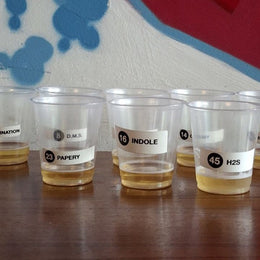
1. What is a "ghost distillery"?
A ghost distillery is a distillery that used to exist in the past but has since ceased operations and closed down. However, their spirits may still exist in the market today. Many of these mothballed distilleries have their own cult following, with popular examples being Karuizawa Distillery, a Japanese whisky that was closed in 2011, and Caroni Distillery, which was producing Trinidad rums until it ceased operations in 2002.
| Read more: Check out our reviews of Caroni rum expressions
2. What is rum made of?
Rum is an alcoholic spirit made from sugarcane, that is then fermented and distilled. Unlike other types of alcohol spirits, rum can be made using different derivatives of sugarcane - from molasses (the leftover byproduct from making sugar), to sugarcane juice (called rhum agricole, and is most popular in the French Caribbean), and even sugarcane syrup or Okinawan black sugar.
A common saying goes “where there is sugarcane, there is rum”, and today, the cane spirit is made in everywhere from the Caribbeans to Scotland, and even places like Japan, Australia and Indonesia. Rum geeks are particularly fascinated by the use of wild fermentation, where wild yeasts are allowed to ferment the sugarcane, which is not controlled and leads to a variety of flavour surprises.
| Read more: Check out our deep dives into different rum distilleries across Jamaica, Australia and Japan.
3. What's the difference between an ale and a lager?
The main difference between these two categories of beer lies in how they were fermented. Ales are created via "top fermentation", whereby yeast ferments at a warmer temperature over a shorter period of time and settles at the top of the beer. Meanwhile, lager is made via "bottom fermentation", whereby yeast is fermented at cooler temperatures over a longer period of time, before settling at the bottom of the beer. That's why the word "lager" was derived from the German word meaning "to store": lagers were first stored in cool caves to mature.
Taste wise, because ale yeasts ferments at warmer temperatures, they tend to release fruitier and spicier compounds known as esters and phenols. As a result, they taste fruitier, with strong, robust flavours and bitterness. Lagers, on the other hand, tends to taste crisper and more refreshing, with cleaner, mellow flavours.

| Read more: 9 Beers from Asia The World Beer Cup Thinks You Should Crush
4. What is a NAS, or non-age statement, whisky?
NAS stands for non-age statement whisky and refers to whisky that quite literally have no age stated on its label. Age statements convey the youngest aged whisky in the bottle, for example, a blend of 12 Year Old whisky, 8 Year Old whisky and 3 Year Old whisky, would have a label that states that the whisky is at minimum 3 years of age.
Hence, the absence of an age on the label signifies that the whisky contained in the bottle are of no guaranteed minimum age. In the case of Scotch (and as some countries such as Japan have now raised regulations similarly), an NAS bottling must still contain whiskies made in Scotland that is at least of 3 years of age to be labelled as Scotch, amidst other bottling requirements.
5. What types of gin are there?
There are several main types of gins out there, with some of the most common including London Dry Gin, Cask Strength Gin, Sloe Gin and Old Tom Gin.
London Dry Gin refers to gin with no sweeteners or artificial flavourings added after distillation. A lack of artificial sweeteners also means that the natural botanicals of the spirit tends to be dominant in the final gin's taste. London Dry Gin must also be distilled to a minimum ABV of 37.5%.
If however, the gin is distilled any higher than 57% ABV, it becomes a Navy Strength Gin. This type of gin originates from the 18th century, when Navy soldiers kept copious amounts of gin on their ship. The soldiers were worried that if any of the gin spilled on the gunpowder stored onboard, the gun powder would no longer be able to ignite. The soldiers eventually discovered that any gin above 57% ABV would still be flammable, and thus the name "Navy Strength" was born.
Another common type of gin is Old Tom Gin. Old Tom Gin is a sweet or cordial style of gin that can have sweetener added to it after distillation, and is sometimes also barrel-aged. The name originates from the use of plaques of cats used in olden times to signify places where gin was sold illegally.
Lastly, there is also Sloe Gin. Sloe Gin is technically a type of gin liqueur, but legally it is still called a gin without the liqueur suffix. Traditionally, sloe gin is made by steeping sloes in gin, sometimes with the addition of sugar.
| Read more: 11 Asian Gins The World Gin Awards Thinks You Need to Try in 2023
Kanpai!

88 Bamboo Editorial Team







